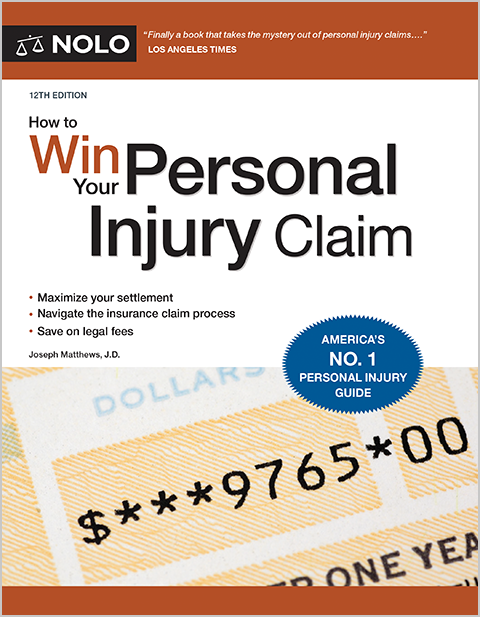How do you establish the defendant's legal liability in a wrongful death lawsuit?
When one person wrongfully causes the death of another, state law usually gives surviving family members the right to recover compensation (damages) from the person who caused the death. This is called a wrongful death case. Each state has its own very specific rules governing wrongful death claims.
Even though state laws differ, there are some basic ideas and rules that most states—and many wrongful death cases—share in common. Included among them is what the plaintiff—the party who brings a wrongful death lawsuit—must prove to win the case.
What Is a Wrongful Death Civil Case?
A wrongful death case is a civil lawsuit for money damages. A civil suit isn't the same thing as a criminal case. But the same event—the wrongful killing of a person—can lead to both kinds of cases.
A wrongful death lawsuit differs from a criminal homicide case in many important ways, including:
- the burden of proof, and
- the consequences if the defendant is found to have caused the death.
The Burden of Proof
The burden of proof is the obligation to prove each required element of a legal claim. That burden, generally speaking, belongs to the party who brings the case. In a criminal matter, that party is the prosecutor. In a wrongful death lawsuit, it's the plaintiff.
The burden of proof in a criminal case probably sounds familiar: Beyond a reasonable doubt. Proof beyond a reasonable doubt means proving the defendant's guilt to a moral certainty. In a criminal homicide case, the prosecutor must prove beyond a reasonable doubt that the defendant killed someone.
In a civil lawsuit, the burden of proof is usually "a preponderance of the evidence." A preponderance of the evidence simply means that something is more likely true than not true. So in a wrongful death case, the plaintiff must prove it's more likely true than not true that the defendant caused the death.
Consequences If the Defendant Is Found to Have Caused the Death
The reason for the high burden of proof in a criminal case should be apparent: The guilty criminal defendant likely goes to jail or prison. In some criminal cases, including homicide cases, there might be other penalties, too. For example, sometimes a guilty defendant is ordered to pay restitution—a type of compensation—to the homicide victim's survivors.
In a civil lawsuit, the defendant doesn't have to worry about going to jail. Most often, the plaintiff is after money damages. We'll talk more about damages in a wrongful death case below.
(Learn more about wrongful death lawsuits and settlements.)
Who Are the Parties in a Wrongful Death Case?
A wrongful death suit centers on the death of a person who was wrongfully killed. The law usually calls that person the "decedent."
Each state's wrongful death law spells out the people who are allowed to be plaintiffs in a wrongful death suit. For example, states typically give a surviving spouse and children the first right to sue. If the decedent didn't leave a surviving spouse or children, the law might allow other surviving relatives—like parents and siblings—to file suit.
If the decedent died with a will, state law often directs the court to appoint an "executor" or "personal representative" of the decedent's estate. The executor or personal representative is authorized by law to file a wrongful death suit to collect damages on behalf of the decedent's surviving heirs.
The plaintiff files a wrongful death lawsuit against a defendant—a person or other entity (like a corporation, a limited liability company, or a government body)—who the plaintiff thinks wrongfully caused the decedent's death.
What Must the Plaintiff Prove in a Wrongful Death Case?
Generally speaking, to win a wrongful death lawsuit, the plaintiff must prove that the defendant, whether intentionally or negligently (meaning carelessly), did something that caused the decedent's death. In addition, the plaintiff needs to show that because of the decedent's death, the plaintiff suffered damages.
Death Caused by an Intentional Act
An intentional act is one that's done deliberately, not carelessly or by accident. If an intentional act causes harm to a person or property, the law calls it an "intentional tort." Few wrongful death cases involve intentional torts, but those that do usually involve a "battery." A battery is an intentional act that causes the harmful touching of another person.
To prove a wrongful death caused by a battery, the plaintiff must show that:
- the defendant engaged in an intentional act, such as shooting the decedent or striking the decedent with an object like a hammer
- the decedent died, and
- the decedent's death was caused by the defendant's intentional act.
The plaintiff must prove each of these elements by a preponderance of the evidence. If the plaintiff fails to prove that the defendant battered the decedent, the plaintiff also has failed to prove that the defendant caused the decedent's wrongful death.
Death Caused by a Negligent Act
Most wrongful death claims result from some kind of negligent act. Here are a few examples:
- the defendant wasn't paying attention and ran a red light, hitting the decedent's car and killing the decedent
- the defendant made a defective product and sold it to the decedent, and the defect caused the decedent's death (sometimes also called a "product liability claim"), or
- the defendant, a doctor, negligently did an operation on the decedent and caused the decedent to die (this could also be called a "medical malpractice" case).
To prove a wrongful death premised on a negligent act, the plaintiff must prove the specific elements of a negligence claim.
- Duty. The plaintiff must show that the defendant owed a duty of care to the decedent. For example, drivers have a duty to pay attention to traffic signals. Product manufacturers have a duty to make reasonably safe products. Doctors have a duty to practice medicine with reasonable care.
- Breach of duty. Negligence means that the defendant did not meet, or breached, a duty of care owed to the decedent. A driver breaches the duty of care, for example, by failing to pay attention to a traffic signal, running a red light, and colliding with another vehicle. A product manufacturer breaches a duty of care by making a defective product. A doctor breaches a duty of care by acting less carefully than would a reasonably careful doctor under the circumstances.
- Causation. The plaintiff must also show that the defendant's breach of duty caused the decedent's death. In most cases, causation tends to follow from proof of duty and breach. But sometimes, proving causation can be a problem. Returning to our car wreck example, the defendant might claim that they ran a red light because their brakes unexpectedly failed, not for lack of attention. The doctor might say that the decedent's death wasn't really caused by a botched surgery but by a preexisting condition.
Damages
It isn't enough to show that the defendant, acting intentionally or negligently, caused the decedent's death. The plaintiff must also prove damages. In a typical wrongful death case, the plaintiff can collect both "economic" and "noneconomic" damages.
Economic damages compensate the plaintiff for out-of-pocket losses caused by the decedent's death. For instance, economic damages might include the value of future financial support the decedent was expected to provide, or the monetary value of household services the decedent performed.
Noneconomic damages are intended to cover more intangible losses and can be challenging to reduce to dollars and cents. Examples include a spouse's loss of love, affection, and companionship or a child's loss of guidance and instruction.
(Learn more about damages in a wrongful death case.)
Get Help With Your Wrongful Death Case
Explaining the basics of a wrongful death claim is pretty simple. But actually understanding and navigating through your state's wrongful death law is another matter. A wrongful death case isn't one you want to take on by yourself. You need experienced, knowledgeable help to guide you through the process.
A lawyer who's experienced with wrongful death cases can help you understand the law and put your best case forward. To have the best chance of success, find an experienced attorney in your area.


